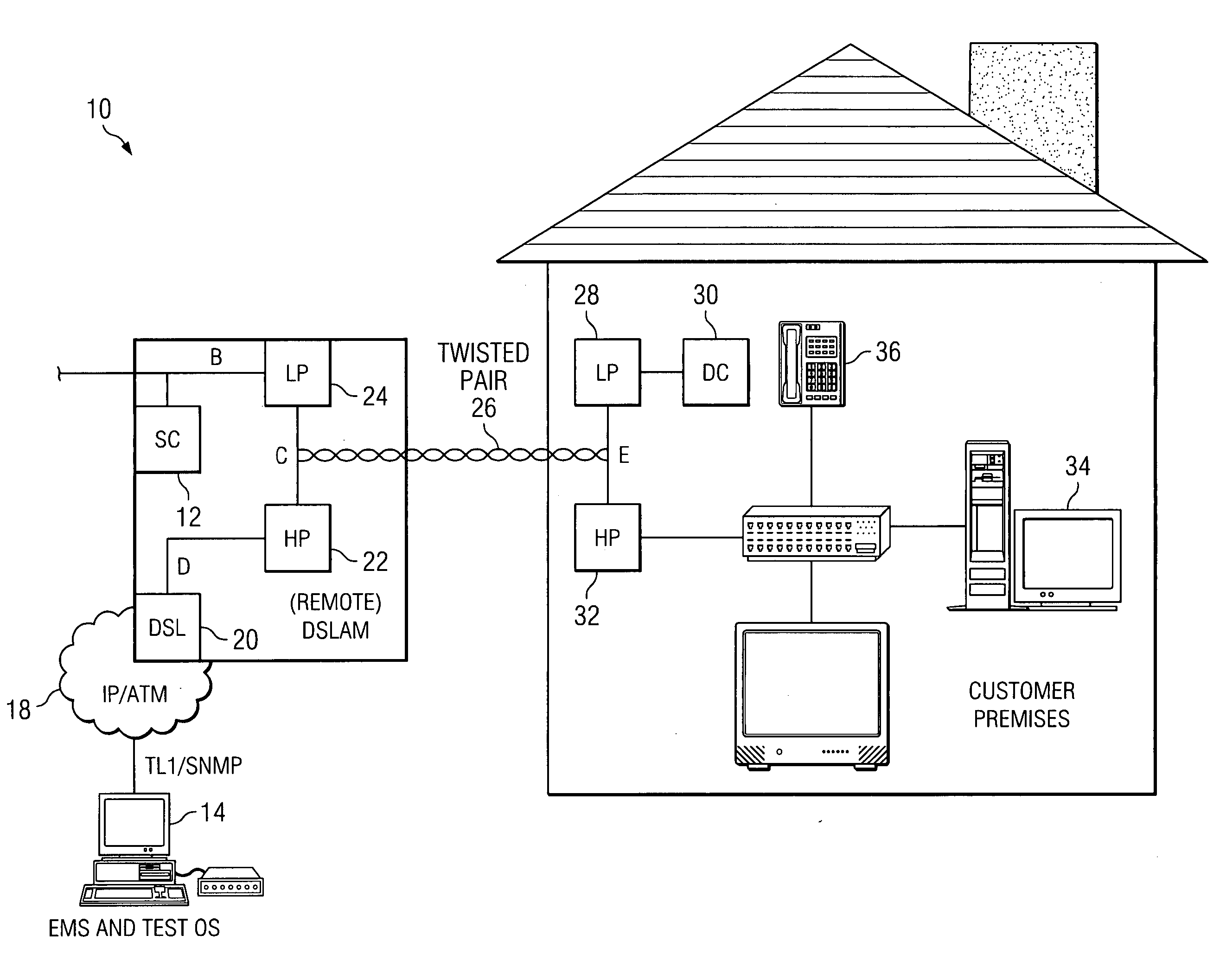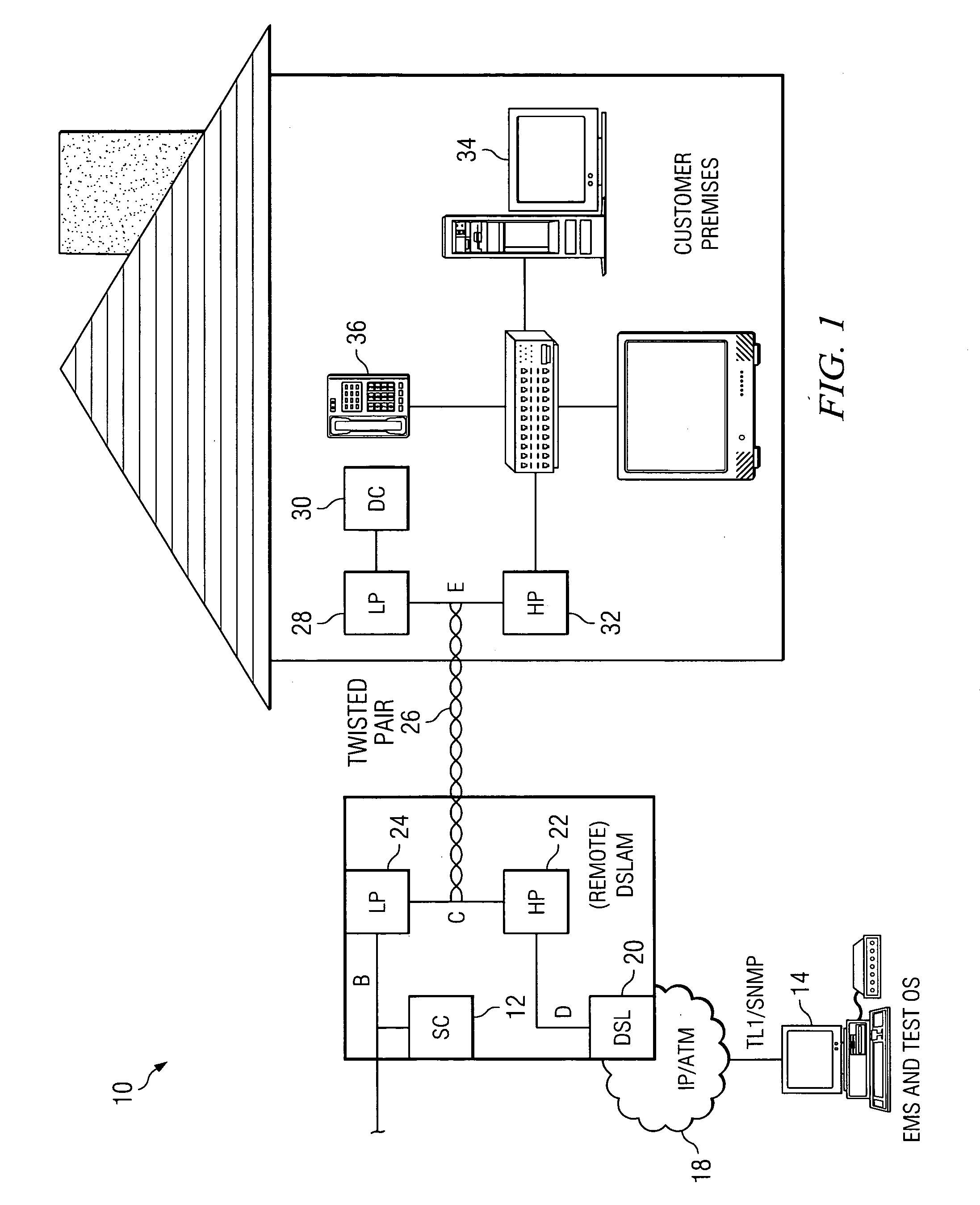Autonomous metallic supervision with sealing current
a technology of sealing current and automatic supervision, which is applied in the direction of supervision/monitoring/testing arrangements, substation equipment, electrical equipment, etc., can solve the problems of not measuring the resistance of the dc loop, the contact to gain excessive resistance and premature failure, and the cost of the customer's premises, so as to prevent corrosion and oxidation of the metallic line, reduce the oxidation at the line splice, and reduce the effect of galvanic corrosion
- Summary
- Abstract
- Description
- Claims
- Application Information
AI Technical Summary
Benefits of technology
Problems solved by technology
Method used
Image
Examples
Embodiment Construction
[0022] Referring now to FIG. 1, a method of testing 10 metallic integrity of a transmission line of a dry digital subscriber line system is depicted. The system shown is the dry DSL system in which the communication from a DSLAM to a customer's premises does not have an underlying POTS system. POTS utilizes a sealing (wetting) line current which is a direct current injected into the transmission line to prevent galvanic corrosion of metallic (copper) lines and to prevent oxidation at splices. This sealing line current is injected into the transmission line from a sealing line current source 12. With the transition by many residences to utilize DSL without underlying POTS the benefits of the sealing or wetting current built into POTS is no longer present. The present invention injects the wetting (sealing) current into dry DSL lines to allow measurement of Direct Current (DC) loop resistances and to provide the benefits of corrosion and oxidation resistance previously only enjoyed fr...
PUM
 Login to View More
Login to View More Abstract
Description
Claims
Application Information
 Login to View More
Login to View More - R&D
- Intellectual Property
- Life Sciences
- Materials
- Tech Scout
- Unparalleled Data Quality
- Higher Quality Content
- 60% Fewer Hallucinations
Browse by: Latest US Patents, China's latest patents, Technical Efficacy Thesaurus, Application Domain, Technology Topic, Popular Technical Reports.
© 2025 PatSnap. All rights reserved.Legal|Privacy policy|Modern Slavery Act Transparency Statement|Sitemap|About US| Contact US: help@patsnap.com



